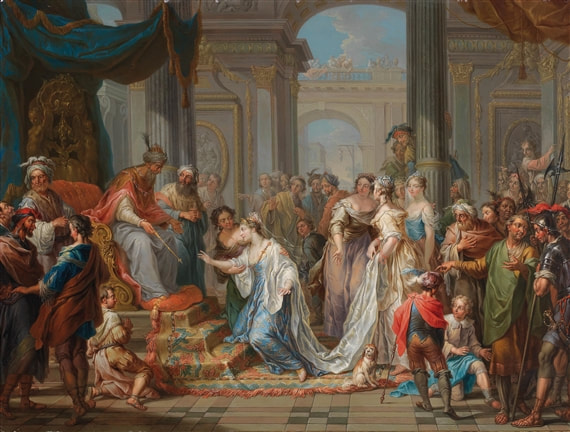|
Like most other tragedies of the Renaissance, Haman takes as its source material the old testament, in this case the Book of Esther. It, like its contemporaries, is simultaneously religious and political. Esther is called upon to defend the Jewish nation from the evil Haman, the king’s counselor who has sworn to massacre the Jews. In the context of the French religious wars of the period, one must wonder who the Jews are meant to represent : the Huguenots or the Catholics. The author Montchrestien married a Catholic but died fighting for the protestant cause. Furthermore, his L'Ècossaise deifies Mary, Queen of Scots, a catholic, while demonizing Queen Elizabeth, a protestant. In this case it may be impossible to know the authorial intent, but I would argue that Montchrestien intended neither. Perhaps he was simply illustrating that the genocide of an entire people is always wrong. In this case, the Jewish nation is punished for the perceived sins of Mordecai, stipulating that many innocent will be killed without cause. The melodramatic fashion in which Montchrestien writes stipulates that innocence will always triumph over evil. Even if that innocence is killed, as was the case in L'Ècossaise, the spiritual victory remains.
0 Comments
Leave a Reply. |
Jennifer KellettM.A. French Literature Florida State University Archives
June 2021
Categories |
Photos used under Creative Commons from mharrsch, Renaud Camus

 RSS Feed
RSS Feed
